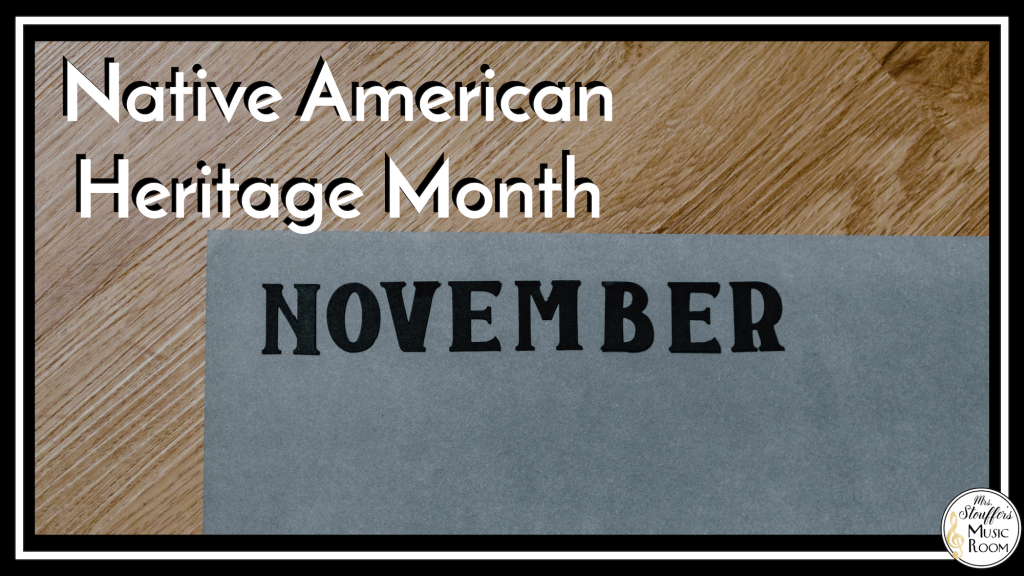
The month of November is Native American Heritage Month. It’s so important to make sure that what we share with students is authentic, appropriate and open to non-tribal members.
There are some great resources out there to help those of us who are not Indigenous navigate teaching our students, but you may not know them yet.
So I made this resource for you on Indigenous music for kids to use in your music class right now.
Indigenous music for kids must be authentic and sensitive to the culture of the tribes the songs are from. The best resources come from the tribes around the United States.
Things To Consider With Native American Music
Present music from a specific tribe, not lumped together. If you don’t know what specific tribe a song or folk legend comes from, make sure you tell the kids that and not label it as generic.
Reach out to local tribes. They can help with resources, telling you what is appropriate for non-tribal members to perform/teach, and education on their specific tribe.
There may be specific places that can help you learn more about the tribe.
When I was in college I worked at Soaring Eagle Casino and Resort in Mt. Pleasant, MI. As part of my hiring process, The Saginaw Chippewa Indian Tribe of Michigan requires employees to visit their cultural center and museum located across the street from the Casino.
If an exhibit, museum or other educational resources exist for your local tribe(s), I highly recommend a trip. This was a very enlightening experience. The Cultural Center can be found here: http://www.sagchip.org/ziibiwing/
NOTE: Since I have referenced CMU and I know the team name comes under fire some times, I want to point out that Central Michigan University and The Saginaw Chippewa Indian Tribe of Michigan have a good working relationship.
The tribe continues to support CMU’s use of Chippewa as the school team name. They also partner in educational endeavors at a benefit to both organizations.
https://cmuchippewas.com/sports/2018/7/6/ot-chippewa-name-html.aspx
https://www.freep.com/story/sports/college/2020/07/24/central-michigan-chippewas-nickname-saginaw-chippewa-indian-tribe/5488280002/
Make sure you have permission. Some music is not allowed to be performed by non-tribal members.
Look for or invite culture bearers to your classroom.
Michelle McCauley, a member of the Pyramid Lake Paiute Tribe, is a music educator who works to educate.
Check out this article she wrote from Decolonizing the Music Room for more information about teaching Native American works and music.
Check your visuals for authenticity. If you cannot be authentic, it’s better to skip them.
Getting Started With Native American Music For Your Classroom
- Michelle McCauley’s YouTube Channel – she’s got great videos about teaching Native American music in the classroom as well as contemporary Native American musicians. Her channel is gold and she is a music teacher.
I recommend starting with her Intro video. - Drumhop.org – Large listening library. Has recordings, history, and resources.
- Native American Music Awards – A great place to look for current Native American artists as well as information.
- Indigenous Music Awards – Another great place to look for current Native American artists.
- American Indian Band Music – a sight featuring the works of Brent Michael Davids, a Native American band composer. Check out the Resources tab.
- Institute of Musical Traditions – Under “Melody Planet”, Episode 1 – Native American Powwow with accompanying lessons.
- Moving Within the Circle – (Affiliate link – I get a small kickback, but it doesn’t change your price. No pressure!) A collection of social songs, dances, and flute songs. Written by Bryan Burton (Caddo, Choctaw, and European descent) and taught directly by to him by group members from several tribes.
- Resources from Martha Redbone published by Carnegie Hall. A Cherokee/Choctaw/Shawnee/African American teacher and performer.
- SRO Artists – More from Martha as a performer.
- David O. McKay School of Education – Check Native American AND Tribe Approved.
- Some lessons from the National Arts Centre of Canada – lessons include dance, the stick game song and listening activities
- The Kennedy Center – Search Native American
- Native Pride Dancers – From the Kennedy Center
- Native American Hoop Dance – Terry & Michael Goedel
- This wonderful Google Doc compiled by Rebecca which lists several Smithsonian Folkways lessons (you know how much I love them) as well as books, lessons online and ensemble music. (Shared with permission)
- Smithsonian Institute – pictures of authentic instruments and recordings.
- Smithsonian Folkways – search for recordings and lesson plans
- Powwow Dance Regalia – Sofie Teller from Menominee 4H
- Powwow Dance Bells with Johnny Nieto | Our Indigenous Traditions
- A course for grades 3-5 by Music Workshop Edu
- Resource from The Perpich Center for Arts Education
- A song to teach (with permissions given). (Bonus – if you are in Michigan, this is about the water around Lake Superior)
- Understanding Traditional Women’s Powwow Dance and Regalia – From Kilpatrick Townsend
- UNM Robb Archives – field recordings, clips, photos from the University of New Mexico.
A few Indigenous Musicians to Check Out
- R. Carlos Nakai – a Navajo-Ute flute player with a substantial repertoire, and several accolades for his work including an honorary Doctorate from Northern Arizona University, The Arizona Governor’s Arts Award, and Grammy nominations.
- Charles Littleleaf is Confederated Tribes of the Warm Springs musician, flute maker, and teacher based in Oregon.
- Notorious Cree – James Jones is a traditional hoop dancer and Indigenous influencer. He has a huge TikTok and instagram following and several accolades for his work. Instagram. He offers several different workshops.
- Prolific the Rapper – Resistance Rap. I’m mind blown. (Some videos contain political statements at the beginning.)
- A great list put together by PBS including a Spotify playlist.
- Maria Tallchief – a member of the Osage Nation and America’s first prima ballerina. (Featured Google Doodle 11/14/2020).
- Maria Tallchief performing for JFK and Eisenhower 11/29/1962 at the Kennedy Center.D
- Robbie Robertson – Jewish and Mohawk guitar player, songwriter, composer, actor. Know for work with The Band.
- Charley Patton – American Delta blues musician (Father of Delta Blues) NOTE: The song linked in this article is about drug addiction.
- Supaman (Christian Parrish Takes the Gun) – An Apsáalooke hip hop artist and fancy dancer (Crow) who combines traditional elements with rap and hip hop. (I just. WOW. )
- Taboo (from Black Eyed Peas)
- Link Wray – Shawnee guitarist (rock), songwriter, vocalist
- Black Lodge Singers – drum group led by Kenny Scabby Robe (Blackfeet), his wife Louise (Yakima) and his 12 sons. Grammy nominated, and well known for work in pow-wow drumming. This link is their bio on Canyon Records with several helpful listening links.
- Jesse Ed Davis – Comanche, Seminol, Muscogee (Creek) and Kiowa guitarist who worked with several macts as well as his own solo career.
- Jim Pepper – Kaw and Muscogee Creek jazz saxophonist. Blended jazz and elements of stomp dance, peyote music and intertribal pow-wow music.
- A Tribe Called Red – Canadian electronic music group who blend several genres including First Nations music
- Lee Mixashawn Rozie – Jazz artist and enthnomusicologist.
- Joanne Shenandoah – Oneida artist, educator, Grammy winner, Emmy nominee, lecturer and composer.
- Wade Fernandez – Menominee Nation and education advocate (has school programs for flute, guitar, storytelling, history, social issues, songwriting, stereotypes, speaking and other offerings)
- Buffy Sainte-Marie – This is great for your younger students. Sesame Street clip. Also shows a Mouth Bow in action.
Connecting To Indigenous Culture In Your Area
If you text (907)312- 5085 with a city and state or zip, they will tell you who’s land you are on. This is a great way to find out what tribal groups were located where your school is and that may help you determine where to start.
I hope that this information on Indigenous music for kids has been helpful.
If you know of other resources that might help out other music teachers, leave a comment!
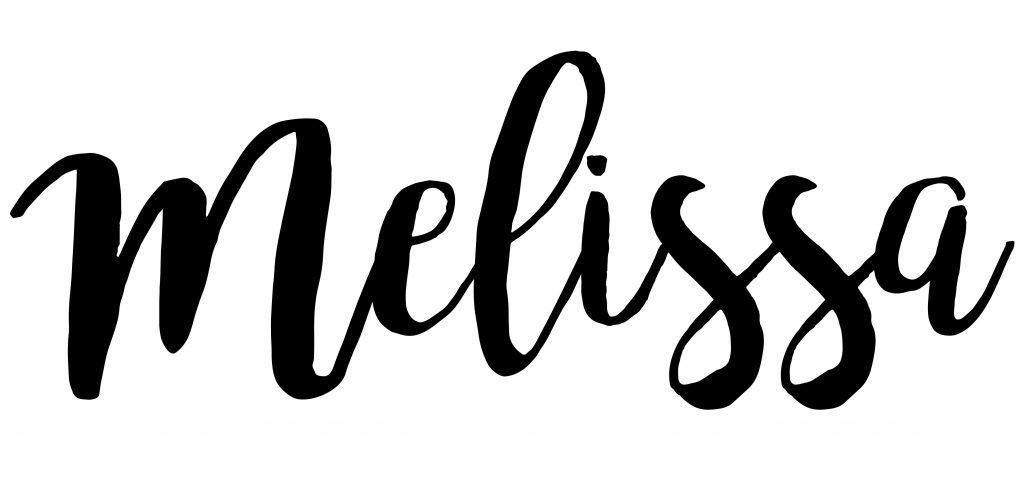

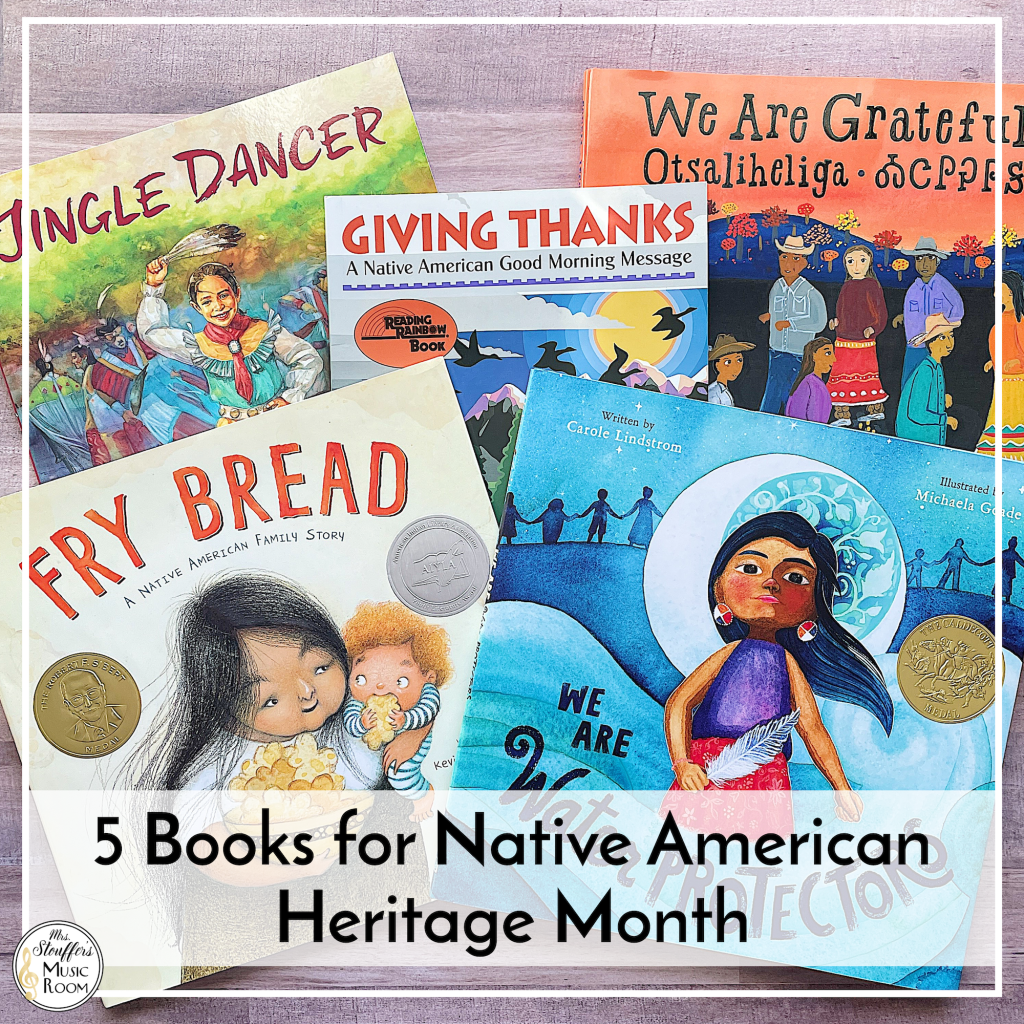
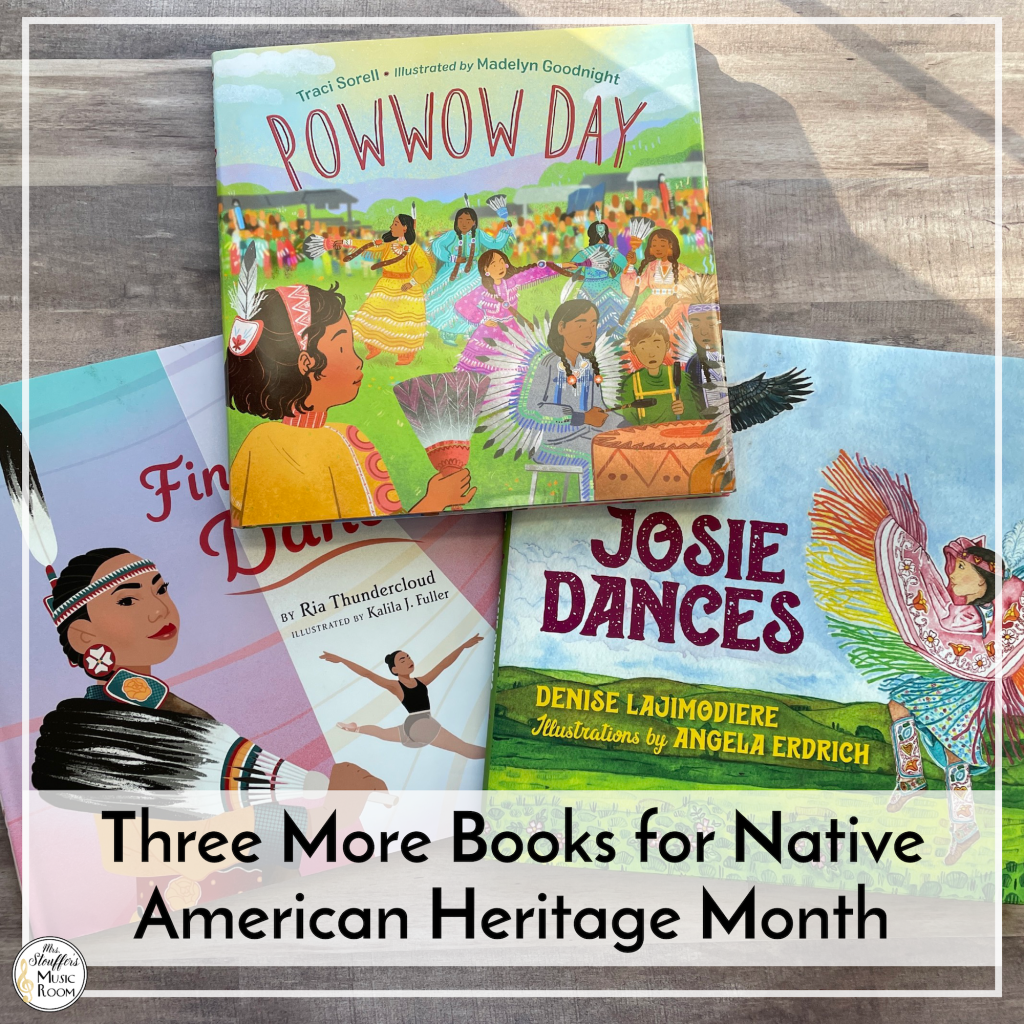

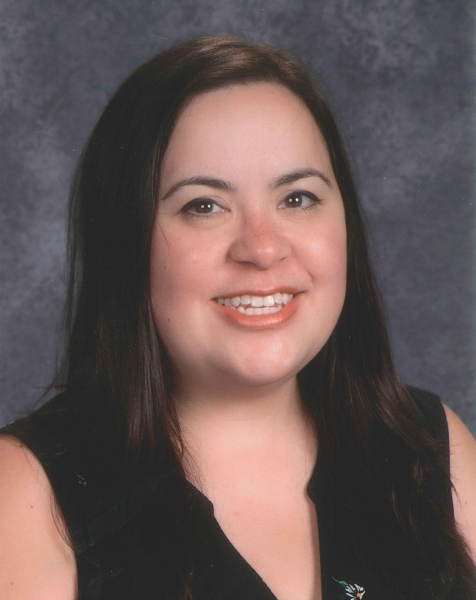
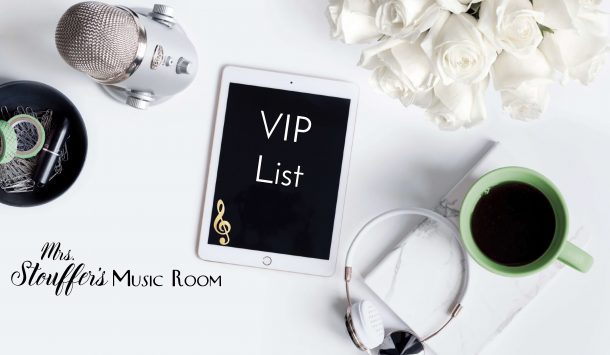
I am applying for a position at a PSA here in the U.P. (I used to live near Mt. Pleasant and taught music in Harrison for 16 years). I am going to need some insight into what would be needed to start a music curriculum K-12 for the Hannahville School. Any thoughts of repertoire, instruments, etc. would be greatly appreciated!
Hey! Send me an email at [email protected] so I can send you a good list!
Melissa
Thank you so very much for these resources. I have been working to educate myself so that I can teach native music in a respectful and authentic way, and this is super helpful!